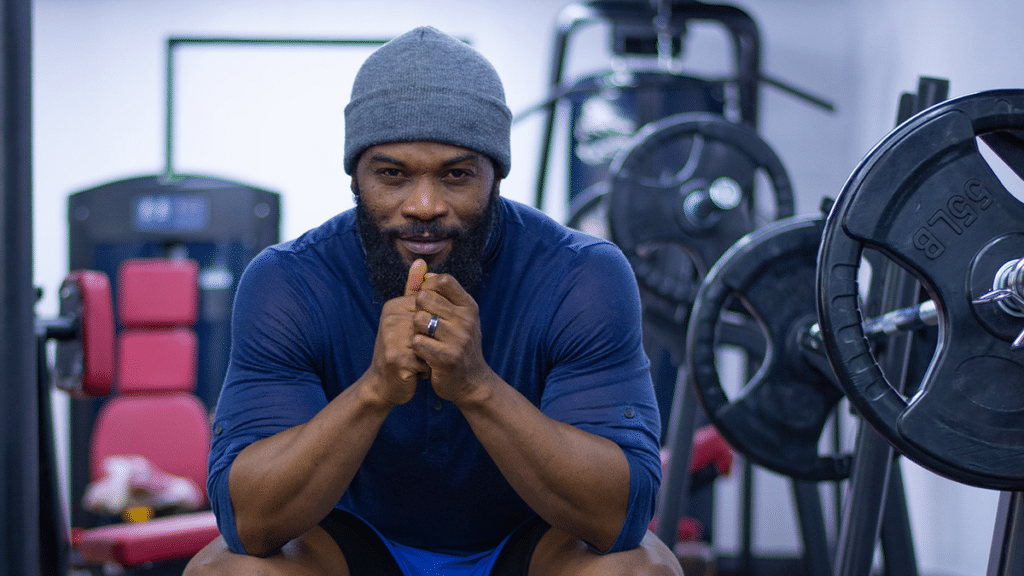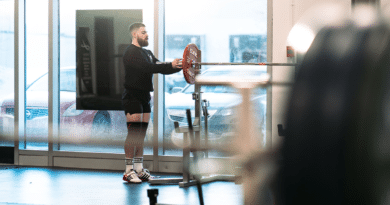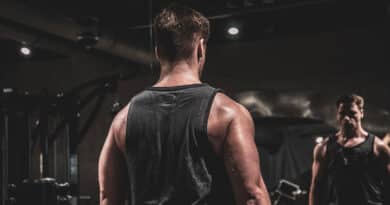How to Build a Big Chest with the Reverse Grip Bench Press – Benefits and Technique
This extensive guide will teach you everything you need to know about the Reverse Grip Bench Press.
What is the Reverse Grip Bench Press?
The Reverse Grip Bench Press is a Barbell Bench Press with the hands rotated into a supinated (palms facing up) position.
This alternate hand placement forces the elbows into a tucked in position near the lifter’s flanks.
The grip is much wider and the lift is performed with a more horizontal range of motion.
- What is the Reverse Grip Bench Press?
- Muscles Worked by the Reverse Grip Bench Press
- Benefits of the Reverse Grip Bench Press
- How to do the Reverse Grip Bench Press
- Technique Tips
- Reverse Grip Bench Press vs Traditional Bench Press
- Reverse Grip Bench Press Variations
- Reverse Grip Bench Press Alternatives
- FAQs
- Learn More
Muscles Worked by the Reverse Grip Bench Press
The exercise targets and improves the following muscle groups:
Pectoralis Major and Minor (Pecs)
The main muscles that are worked are the pecs.
The exercise demands that the upper pecs work especially hard.
The barbell comes into contact with the chest in a much lower position. The upper chest fibres help to stabilise and bring the barbell up and back through the range of motion, they are engaged in a unique and challenging way.

Lats
The lats stabilise and power the exercise. The different grip often makes the movement feel less secure that the traditional Bench Press so the lats also help to balance the weight through the full range of motion.
Anterior Deltoid (Front Delt)
The Press requires much more shoulder flexion to complete the movement.
This forces the front delt to be accentuated. It must work harder that the side and rear delts.
Triceps
The exercise is a fantastic way to strengthen and grow the triceps.
Don’t make these chest training mistakes
Biceps
A great advantage of the exercise is that it serves to work the biceps as well.
Forearms
The reverse grip will test and improve the strength of your forearms when you perform the exercise.
In order to hold the weight, the wrists must create a shelf in a slightly cocked back position. This also helps to stop the weight slipping away as well.
Benefits of the Reverse Grip Bench Press
The exercise has many excellent benefits.
Better Upper Body Strength
You will build a stronger upper body with this exercise. Like a conventional Bench Press, this version will force your body to grow stronger.
Make sure you don’t load the barbell as heavy as you would for your regular Bench Presses as the new grip and different bar path change the stimulus and stress for your body and gains.

Impressive Muscle Gains
If hypertrophy is your goal, then aim for 3 – 5 sets of 8 – 12 reps.
Regularly shocking your body and adding new stimulus is an excellent way to compliment muscle growth so the Reverse Grip Bench Press is a great option.
It has the ancillary benefit of also working your arms and shoulders, as well as your pecs, in completely new ways.
Build Bigger Arms
This exercise places much more emphasis on your biceps. These muscles must help to balance and control the movement and are placed under considerable stress.
This time under tension and new stimulus will help to stimulate and cause muscle growth for your guns.
Add Variety and Help Break Through Plateaus
We all experience training plateaus from time to time. Moments when we get stuck on certain numbers and lifts and can’t seem to break through them.
Often switching up an exercise can be a great way to find an alternative method of progressing through sticking points.
If you are experiencing this with your Bench Press then add the Reverse Grip variation into your training and try something new.
It will strengthen your pressing power and augment strength in original ways and help you to smash through plateaus.
Improve Wrist Mobility and Strength
The reversed wrist position will help to strengthen your wrists themselves, as well as enhance your mobility.
It is vital that you start light and load gradually to avoid injury. The tendons and wrists themselves need time to adjust to the unique loading and new stress.
Effective During a De-load
No lifter can shift more weight with the Reverse Grip that with the conventional Bench Press so it makes it an excellent choice when it comes to a de-load period.
This is an effective idea because you also reap the additional benefits from the Reverse Grip as well.
Enhances Coordination and Proprioception
The exercise is not easy. It requires a great deal of balance, control and confidence. You must move the load with a completely different grip, through a changed bar path.
This is a challenge, which is positive, because it will force your mind to work and will increase your general coordination and proprioception.

Train Around an Injury
The Reverse Grip can sometimes be more comfortable when dealing with a shoulder or elbow injury. This is because of the level of external rotation occurring at the shoulder joint.
Outwardly rotated arms open up the chest to a greater degree and lower the chances of shoulder impingement.
How to do the Reverse Grip Bench Press
Using the following instructions to perform the Reverse Grip Bench Press with correct form.
You will need a bench press and a barbell. Set the barbell to a height where your starting grip maintains a slight bend in your elbow to allow for the racking and un-racking process.
Make Sure you have a Spotter!
For the Reverse Grip Bench Press this is especially important. The grip will feel less secure at first (but you will adjust to it) so a spotter is essential to keep everything safe.
- Lie back on the bench and grip the bar with an underhand, supinated grip. Your grip should be wider than shoulder width apart. You thumbs face the weights at each end of the barbell
- Allow your wrists to bend slightly to accommodate the weight
- Plant your feet hard into the ground to establish a solid base
- Un-rack the bar and begin with arms fully extended. The bar should be in line with the nipples
- Inhale and brace your grip, core and glutes
- Bend your elbows and lower the bar slowly. Keep elbows tucked into the sides
- Make the barbell travel horizontally down the body as you lower it vertically. The bar should touch your sternum at the bottom of the movement. This is the safest movement for the health of your shoulders, elbows and wrists
- Pause then lift the barbell back to the starting position and exhale
- Repeat for the desired number of repetitions
Technique Tips
Due to the biomechanics of the body in relation to the exercise itself, you will not be able to grip the bar as tightly with the pinky (little finger) end of each hand.
Establish a slight arch in your upper back to maximise pushing power and stability.
Keep your glutes on the bench.
slightly arch your upper back to puff out your chest.
Reverse Grip Bench Press vs Traditional Bench Press
The Reverse Grip Bench Press:
- Tests and works the biceps more
- Activates the upper chest to a greater degree
- Has a lower risk of common Bench Press shoulder injuries
- Provides an alternative barbell chest exercise for muscle and strength
The traditional Bench Press:
- Can be used to load more weight
- Is better for tricep activation
- Is the standard for powerlifting and competition meets
Reverse Grip Bench Press Variations
The variations of this exercise are all characterised by a lying, pressing motion with a reverse grip.
Decline Reverse Grip Bench Press
This variation alters the position of the athlete into a decline position. This changes the stress on the pecs, shoulders and biceps. A spotter is absolutely essential for this movement.
Incline Reverse Grip Bench Press
This follows the same pattern as above only the head is raised and the body tilts down from that position.
Use an angle of 35 – 45 degrees for best effect. Once again it will create a different pressing angle and provide your body with new stimulus.
Reverse Grip Machine Chest Press
This is a good way to build confidence for the movement. We don’t recommend using this method all the time as you will lose the advantages of having to balance and control the weight and bar path.
They are fairly safe but be aware that they force a fixed vertical range of motion which may not be the best for your wrists. Again, start light and use this machine to build familiarity with the movement.
Don’t use the machine variation to completely replace the free weight version in your training.
Reverse Grip Dumbbell Press
This is another safe way to become adjusted with the stresses of the movement.
It also builds solid unilateral strength and power. It will help to identify and eliminate any weaknesses a lifter may have in their strength and mobility.
The exercise enhances stability, coordination. This dumbbell variation, like its barbell counterpart, can be performed with a flat, incline or decline bench.
Reverse Grip Bench Press Alternatives
The following exercises are all excellent alternatives if you want to improve your upper body.
Bench Press
The staple upper body pressing exercise alongside the Strict Press.
Banded Bench Press
An easy way to make the exercise more unstable, you will improve your coordination, control and confidence.
Bench Press with Chains
Fun and challenging, this will keep your body guessing and your gains progressing.
Banded Push-Up
A simple but highly effective exercise, this is perfect for anyone that feels like Push Ups are getting a little too easy. Test yourself by incrementally increasing the resistance level of the band.
Banded Dumbbell Bench Press
The bands add additional instability and difficulty. They also help to teach you how to lift with more force and power.
Board Press
This limits the range of motion and emphasises the lockout portion of the lift.
Floor Press
An exercise that can be completed with dumbbells or a barbell. This is perfect if you don’t have access to full gym equipment.
FAQs
Still got questions? Scroll through our FAQs
Doesn’t the Reverse Grip Bench Press Target the Triceps More?
No, it doesn’t. rotating the grip forces more stimulus onto the biceps. The triceps still have to work, but to a lesser extent than they would with the conventional Bench Press.
What is the Reverse Grip Bench Press Good For?
The exercise is good for building upper body strength and muscle, especially for the upper chest. The altered range of motion makes it a great new stimulus for the mind and body and it can be used as an effectively tool during a de-load period.
My Wrists Hurt when I use this Grip, Why?
As long as you are building up the weight slowly and allowing your body time to adapt and grow then don’t worry.
Your wrists are responding to the new stimulus and they will get stronger and tougher to accommodate. Over time, as this process happens, they will get more resilient and stop hurting.
Are there Other Tips to make this Exercise more Comfortable?
Yes, try making your grip wider. This will enable you to angle your hands outwards more and find a more comfortable placement. Don’t forget to keep your elbows tucked into your sides as well.
Learn More
Build bigger arms or a stronger chest and learn how to lift weights from the floor.





Comments are closed.